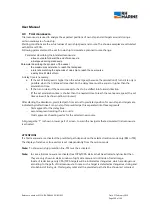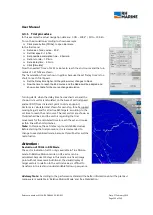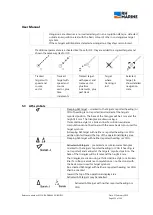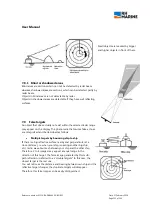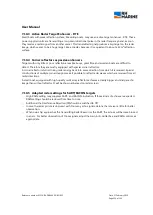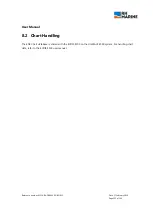
User Manual
Reference number: 4111A-RADAR4600-GBD-R1.1
Date: 27 February 2018
Page 121 of 149
7.5
Maximum detection range
The maximum detecting range of the radar, Rmax, varies considerably depending on several factors such as
the height of the antenna above the waterline, the height of the target above the sea, the size, shape and
material of the target, and the atmospheric conditions.
Under normal atmospheric conditions, the maximum range is equal to the radar horizon or a little shorter.
The radar horizon is longer than the optical one by about 6% because of the diffraction property of the
radar signal. The Rmax is given in the following equation.
R
max
= 2.2 x
√(ℎ1 + ℎ2)
Rmax: radar horizon (nautical miles)
h1:
antenna height (m)
h2:
target height (m)
For example, if the height of the antenna above the waterline is 9 meters and the height of the target is 16
meters, the maximum radar range is;
R
max
= 2.2 x
√( 9 + 16 )
= 2.2 x (3 + 4) = 15.4 nm
It should be noted that the detection range may be reduced by precipitation (which absorbs the radar
signal).
7.5.1
Target detection ranges subject to regulations
Subject to IEC standard 62388, in clutter-free conditions, target detection must be ensured according to
following table.
The table is based on different pre-conditions, described in chapter 5.9.2 of IEC 62387.


